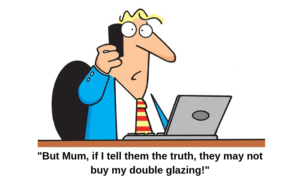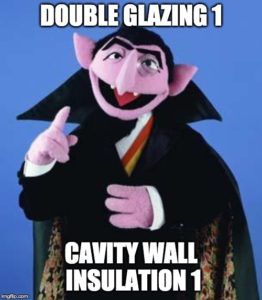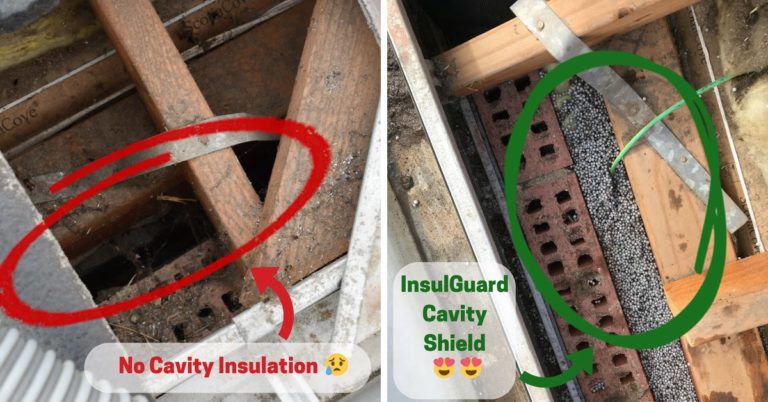Double glazing vs Cavity Wall Insulation. If you call a double glazing company, what do you think he will try and sell you? Double glazing of course. Whilst Perth is flooded with every man and his dog selling double glazing, which one is going to improve your home comfort? Instead of trusting any old research, we’ve collaborated with the Australian Government’s Your Home project; Australia’s guide to environmentally sustainable homes. We’ve collected the data, rung the bell and have the verdict.

Round 1: Winter Heat Loss
We all know Perth can get a bit chilly in the Winter months. Some nights we can 5-6 degrees, whilst the maximum can only reach low to mid-teens. This means that to keep the internal temperature of your home comfortable, we need to retain the heat.
How is heat lost from an average home?
In an average home, 15-25% of your heat is lost through the walls. Besides your roof, your walls make up one of the largest surface areas of an average home, therefore being largely responsible for thermal performance. This is compared to windows, which account for 10-20% of your heat loss in the cooler months.
Double Glazing vs Cavity Wall Insulation Round 1 winner = Cavity Wall Insulation


Round 2: Summer Heat Gain
Perth gets bloody hot in the Summer. With consistent high 30 degrees, coupled with warm and barmy nights, your home can become a bit of a “hot box”. To keep the home cool, we need to ensure the home is passively designed to keep heat from penetrating the home.
Where is heat gained in the home?
In an average home, your windows are one of the biggest culprits to your home temperature rising. They account for 25-35% of unwanted heat gain, largely due to a single pain of glass offering very little resistance to direct radiation heat (direct sunlight) and convection (temperatures outside being hotter than inside). This heat gain is significantly larger than your walls, which account for 15-25% of your heat gain.
Double Glazing vs Cavity Wall Insulation Round 2 winner = Double Glazing

Round 3: Cost & ROI
Whether you choose to convert windows to double glazing, or to a low e glass, it can be a substantial cost. Whilst not all windows need to be replaced and converted to double glazing, an average conversion of the necessary windows can average around $12,000 – $16,000 (based on replacing 20m2 windows/doors). Cavity wall insulation is significantly cheaper. For example, to supply and install InsulGuard Cavity Shield to all external walls in an average home is $3,000 – $4,500.
The better value?
Working off the cheaper price for both products, as well as how much heat is transferred through the windows and walls in the Winter and Summer, we can calculate the best return on investment.
Winter Heat Loss:
Cavity Wall Insulation
$3,000 (cost) / 25% (heat lost through walls)
= $120 for a 1% reduction in heat loss for your home
Double Glazing
$12,000 (cost) / 15% (heat lost through windows)
= $800 for a 1% reduction in heat loss for your home
Summer Heat Gain:
Cavity Wall Insulation
$3,000 (cost) / 25% (heat gain through walls)
= $120 for a 1% reduction in heat gain for your home
Double Glazing
$12,000 (cost) / 35% (heat gain through windows)
= $343 for a 1% reduction heat gain for your home
Double Glazing vs Cavity Wall Insulation Round 3 Winner: Cavity Wall Insulation

The Verdict
Get both if you can afford it.
It’s pretty simple that after your roof insulation, your walls and windows are the next biggest culprits in terms of heat loss and heat gain in your home. With your ceiling insulation, cavity wall insulation and double glazing, you can effectively reduce heat transfer by 65%. This will not only provide year round comfort by making your home more passive, but also significantly reduce your heating and cooling costs which account for nearly half your energy bill. Couple this with the reduction in CO2 emissions, your home will save you money, reduce your carbon footprint and become more sustainable.
If you need to choose between double glazing and cavity wall insulation from a benefits and cost point of view, cavity wall insulation is the winner. Not only is it more effective improvement than double glazing in the winter, it has a better ROI in both winter and summer.

